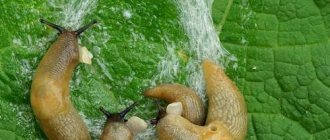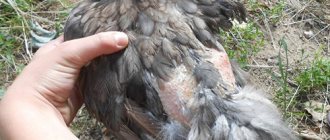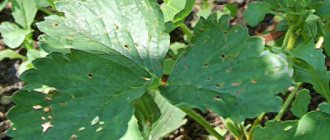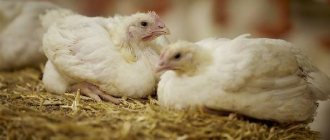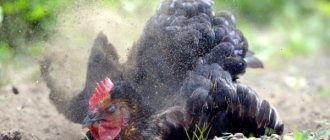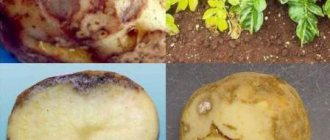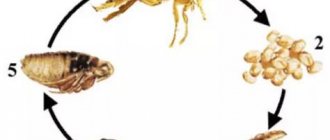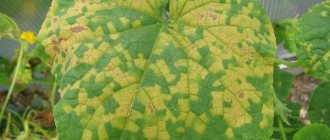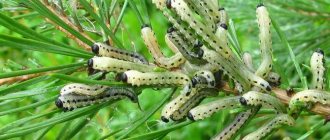Very often, onion leaves begin to turn yellow ahead of time. There are many reasons for this phenomenon, for example: acidic soil; lack of nitrogen, copper or potassium; the plant was frozen; excess moisture in the soil.
All these reasons can be easily eliminated and our onions will come to life and turn green again.
But onions can also turn yellow due to attack by pests, and this is more serious and not so easily remedied. Does the bow have many enemies?
Quite a lot, but the most harmful of them are: onion fly, onion hoverfly, tobacco thrips, onion secrecy, onion moth, onion root mite and stem nematode.
These onion pests damage not only various types of onions directly, but also garlic, tulips, daffodils, lilies and other ornamental bulbous crops.
Each of the onion pests is insidious, but often they act together and then the yield losses are enormous.
In addition, pests are carriers of many onion diseases.
Onion fly
The onion fly is perhaps the most dangerous pest of onions and is found in all regions of Russia.
Bulbs affected by the larvae of this fly cannot be saved.
The onion fly especially “loves” onions, although garlic and other types of onions are also not deprived of its attention.
Externally, this pest is very similar to a housefly, has a yellowish-grayish color and a length of 6 to 8 mm. The worm-like larvae of the onion fly are whitish in color and up to 8 mm long.
Fly pupae overwinter in areas where onions or other bulbous crops were grown, under unharvested plant debris or in the soil at a depth of approximately 10-20 cm.
In the spring, when mass flowering of dandelions and cherries begins, flies emerge from their pupae.
For some time they feed on nectar on flowering weeds, and then the female flies begin laying eggs on the soil next to the bulbs or directly on dry scales.
The larvae do not keep themselves waiting long and, after about a week, they are already attacking the growing onion bulbs.
In the lower part of the bulb they eat away a common cavity in which several dozen larvae can feed simultaneously.
Plants infected with onion fly larvae begin to turn yellow and dry out, the bulbs rot and are easily pulled out of the ground, as there are almost no roots left.
The larvae feast in the bulbs for about 20 days, and then go into the soil to pupate. Over the course of the entire summer, two generations of this pest can develop, and in warm regions even three.
Onion hoverfly
The onion hoverfly is also the most harmful insect, like the onion fly.
In addition to various types of onions, garlic and decorative bulbous crops (it especially prefers gladioli, tulips and daffodils), the hoverfly can even harm tomatoes, carrots, potatoes and beets.
True, unlike the onion fly, it is not widespread throughout Russia. Eastern Siberia and the Far East are free from this pest.
The adult hoverfly is larger than the onion fly and reaches a length of 10 mm and has a greenish-bronze tint. The larvae of the onion hoverfly are worm-shaped, greenish-gray in color, and the entire body is covered with short spines.
They can overwinter both in bulbs that remain in the ground after harvesting, and in bulbs stored for storage.
The larvae pupate in the spring, and in early summer the mass flight of adult hoverflies begins. They begin laying eggs between the dry scales of the bulbs and after a week new larvae appear.
During the summer, two generations of hoverflies usually have time to develop. Bulbs affected by this pest rot and quickly decompose due to fungal and bacterial infections.
On cucumbers
You can detect the first signs of thrips damage to cucumbers using a magnifying glass. On the upper side of the leaf blades you can see small silvery dots, and on the lower side you can see larvae or adults. They are easily distinguished from other pests by their two pairs of fringed wings. If they are disturbed, they begin to make sharp jumps, pushing off the surface with their abdomen.
When using folk remedies such as infusion of tobacco or garlic, you will have to carry out treatments every 7 days. Better results can be achieved by treating cucumber plantings with chemicals, for example, “Alatar”. To do this, dilute 5 ml of the drug in 1 liter of water, stir, bring the volume to 5 liters and spray the cucumber bed. This working solution is enough to treat plantings on an area of 1 sq.m.
Thrips
These tiny (no more than 1 mm in length) insects are extremely difficult to notice, so we often pay attention to them only when thrips are already on our plants in sufficiently large numbers.
They infect plants both indoors and outdoors. By sucking the juice from the leaves and inflorescences of onions, thrips prevent the plant from developing normally.
First, whitish spots appear on the leaves, then the leaves become distorted, turn yellow and eventually dry out.
Female thrips remain for the winter in the soil and in plant debris at a depth of 5-7 cm, in greenhouses, hotbeds and in onion storage facilities under dry scales.
They fly out in early spring and initially settle on weeds, then move to vegetable crops.
Females lay eggs under the skin of the leaf and after about a week the larvae appear.
They feed regularly for 8-10 days and go into the soil to a depth of 10-15 cm, and after 4-8 days a new generation of thrips attacks our plants.
During a season, up to 3-6 generations of thrips can develop, and in greenhouses even more - 6-8 generations.
Thrips that end up in storage reproduce throughout the winter. Under the dry scales, the surface of the bulb becomes wrinkled, sticky, and spotted.
Thrips harm not only onions, but also such cultivated plants as: cucumbers, melons, eggplant, garlic, cabbage, radishes, parsley, flowers and many others.
Onion sneaker
The onion stalker also leaves whitish stripes on onion leaves.
This is a small bug, only 2-3 mm long, black in color with whitish scales on the body and a proboscis bent down.
Appearing after wintering (late April - early May), the secretive proboscis feeds on sprouted old bulbs that remain unharvested or on perennial onions. Then they move on to new onion plantings.
Female beetles gnaw small holes in the leaves and lay eggs, from which yellowish larvae hatch after 7-14 days (depending on the weather).
They diligently begin to eat the inner juicy pulp of the leaves without touching the outer shell.
As a result of such damage, the leaves begin to turn yellow at the top, curl and dry out prematurely.
Onion moth
Onion moth primarily plagues all types of onions and garlic, but sometimes it can also be seen on ornamental lilies.
Most of its activity occurs in warm, dry weather. The larvae of this small butterfly burrow into leaf tissue and eat them from the inside, leaving the skin intact.
The leaves first wither and then dry out completely.
Trying to find food for themselves, onion moth larvae even climb into inflorescences, and through the neck of the bulb and into it.
Over the summer, onion moths are capable of producing 3-4 generations of their own kind. The first generation begins to harm our plantings already in May-June.
The front wings of this butterfly have a span of approximately 1.5 cm and are brown in color with white specks.
They overwinter mainly on the soil under plant debris.
Host distribution and range[edit]
Onion thrips are thought to have originated in the Mediterranean region, but can now be found on every continent except Antarctica. [3] It attacks a wide range of plant hosts, including onions, leeks and garlic, brassica plants such as cabbage, cauliflower and broccoli, asparagus, sugar beets, melon, pumpkin, squash and cucumbers, strawberries, potatoes, tobacco , cotton and many others. fruit and ornamental plants. [1] Onion thrips was the first vector of tomato spotted wilt virus, reported in 1927. Some populations of onion thrips have now been identified that are unable to transmit tomato spotted wilt virus, possibly due to genetic spread in the global population. [2]
Onion root mite
This pest damages a lot of plants, primarily bulbs of onions, garlic, tulips, daffodils, and other bulbous plants, as well as corms of gladioli, root tubers of dahlias and many other crops.
First of all, the onion mite settles in damaged or diseased plants. The mite is moisture-loving and in humid, warm (26-28ºС) storage conditions it develops very rapidly in just 10 days.
The female mite has a broad oval, whitish vitreous body, only about 1 mm long, with brown legs and mouthparts. She can lay from 350 to 800 eggs.
The mite penetrates the bulb through the bottom and, when feeding, wears it down so much that the bottom turns into dust.
They also damage the primordia of peduncles and leaves, thereby greatly reducing the quality of planting material.
By planting mite-infested bulbs in the garden bed, we facilitate its further spread to undamaged plants.
And it is very difficult to notice these tiny pests, unless, of course, they have already seriously damaged the planting material.
Onion root mite spreads with the remains of damaged plants, soil and equipment.
Stem nematode
This small (only 1-1.5 mm) worm-like pest causes gardeners a lot of trouble.
The stem nematode is capable of reproducing on many types of ornamental and vegetable plants and damages almost all bulbous crops.
The nematode penetrates the plant and lays eggs in it. It is very difficult to fight it, since in our areas it can, being in a state of suspended animation, live without feeding for several years.
Carefully monitor the planting of onions and garlic, and if you see that the leaves begin to lighten, curl, or swelling appears on the lower part of the leaves, then you need to take immediate action.
As the pest continues to multiply, the bulbs in the ground begin to rot, and the above-ground part of the plant dries out.
The nematode overwinters on plant debris of onion crops, but quite a significant part of it ends up on the bulbs and in storage.
Wheat
It can feed on many plants, but its favorites are cereals, both cultivated and wild. In addition to wheat, they eat rye , buckwheat , barley , corn , oats , tobacco , and cotton .
If there is no favorite food nearby, wheat thrips may attack weeds.
The color is always dark - black or brown, the legs and antennae are yellow. The length of the female is up to 2.5 mm , the male is half as long.
The life cycle is longer than other thrips species and the fertility is less. Standard clutch - up to 25 light red eggs .
IMPORTANT! Mass emergence of adults occurs when cereals begin to ear.
How to control pests
Our main task is to prevent pests from entering onion plantings, since it is very, very difficult to cure plants affected by larvae, as I wrote above.
We will defend ourselves with all possible methods: agrotechnical, mechanical, and chemical.
So what can we do:
Agrotechnical methods
1. Immediately after harvesting, we very carefully remove all plant debris.
2. Be sure to dig up these areas in the fall and thereby destroy the wintering areas of pests.
3. Try not to grow onion crops in the same area for several years, as in this case the number of pests in this area will increase from year to year.
4. It is advisable to plant onions and other bulbous crops as early as possible, this will allow young plants to become sufficiently strong by the time pests appear.
5. Timely liming of the soil will help in the fight against stem nematode.
6. In those areas where onion or garlic has been damaged by a stem nematode, it will be possible to plant bulbous crops again no earlier than after 4-5 years.
7. During the period of mass pupation of onion larvae, we more often loosen the rows, followed by watering and fertilizing, and also remove damaged leaves and destroy them.
8. It is necessary to select seed material more carefully.
Mechanical methods
1.To prevent the onion fly and hoverfly from laying eggs on plants, you can cover the plantings with any covering material.
2.The same effect can be achieved by mulching. It is good to use peat chips for mulching. All flies, and onion flies are no exception, avoid peaty soils.
3.You can cover the onion plantings with spruce paws, which initially protect them from the cold. When leaves appear on the surface of the ground, the branches are removed, and the fallen needles will perfectly protect the plants from the onion fly.
4.During the summer, regularly remove and destroy affected plants, and do not forget to weed.
5. Before storing onions, dry them thoroughly, sort them, and then regularly remove diseased onions during storage.
Traditional methods
Tireless amateur gardeners use various methods of controlling onion pests in their plots and never cease to amaze with their ingenuity.
Here are some tips I found in the literature:
1. Use ordinary table salt. When the onion leaves become slightly higher than 5 cm, you need to start watering the onions with a salty solution. The solution is this: about 150 g of salt per bucket of water. Stir well and very carefully, trying not to get it on the leaves or the ground around, pour the solution strictly under each bulb. After this, it is advisable, just in case, to wash off the salty droplets that have fallen on the plant with clean water from a watering can. Then, after three hours, water the onion rows with clean water. After 10-14 days, if the threat of onion damage persists, you can repeat the treatment, increasing the dose of salt to 200 g.
2. Salt can also be used to combat onion flies in this way: soak the onion sets for 2 hours before planting in a fairly strong salt solution. Then we thoroughly wash the onion sets several times in clean water and leave them wet overnight, and in the morning we plant them in the beds.
3. Many summer residents sprinkle various repellents along the rows, for example: tobacco dust, both in pure form and mixed with ash; fluff lime; naphthalene mixed with sand. And due to the fact that odors quickly disappear, it is necessary to sprinkle the plantings every week.
4. Another recipe for a repellent: take 100 g of wood ash, one tablespoon of tobacco dust and one teaspoon of ground pepper, mix and treat the soil around the bulbs. This amount of mixture is used to process 1 square meter.
5. The following infusion has proven itself well: pour 200 g of tobacco dust (shag) with 2-3 liters of hot water, mix and leave to infuse. After 3 days, add water to the infusion, bringing the volume of the infusion to 10 liters, add 1 tablespoon of liquid soap and 1 teaspoon of ground pepper (black or red). We filter the resulting solution and spray both the plants themselves and the soil around them.
6. But Tatyana Alekseevna from Novosibirsk is saved from the onion fly with the help of birch tar, which can be bought both at the pharmacy and in gardening stores. To do this, take a small container and dilute the clay in it to the consistency of liquid sour cream, then add 2-3 teaspoons of tar. When planting, dip the bottom of each bulb in this mixture. We carry out the second treatment with tar when feeding onions, adding 2 teaspoons of tar to a bucket with fertilizer.
7. As a preventive measure against onion flies, you can dust the plantings of onions and other bulbous crops with the following vigorous mixture: ash and carefully pureed carrot seeds. They say it is a very effective remedy.
8. And, of course, do not forget to plant our helpers such as low-growing marigolds next to the bulbous plants, which not only repel the onion fly, but also do not allow nematodes to reproduce.
9. To prevent stem nematodes, heat treatment of planting material is very important, which must be carried out for quite a long time (4-6 hours) and at a fairly high temperature (42-45ºC).
Chemical methods of control
And if thrips have already been found on onions: how to fight them?
- Fumigate the room where the seeds are stored with sulfur (sulfur gas): 60 g of sulfur is enough to treat 1 cubic meter of storage.
- A good result is obtained by systemic treatment of the crop with insecticides: Actellik, Aktara, Fitoverm, Vertimek, Mospilan, Karate, Zeon, Fufanon, Iskra Zolotaya, Komandor Maxi.
- Thrips on onions are successfully destroyed by the natural insecticide Spintor. The drug is used in accordance with the instructions. Apply once every one and a half weeks. In general cases, repeated treatments at air temperatures of 15 to 22 degrees are carried out one and a half weeks after the first. At 22-26 degrees – in 5-8 days.
Carefully! When growing green onions, insecticides should not be used.
